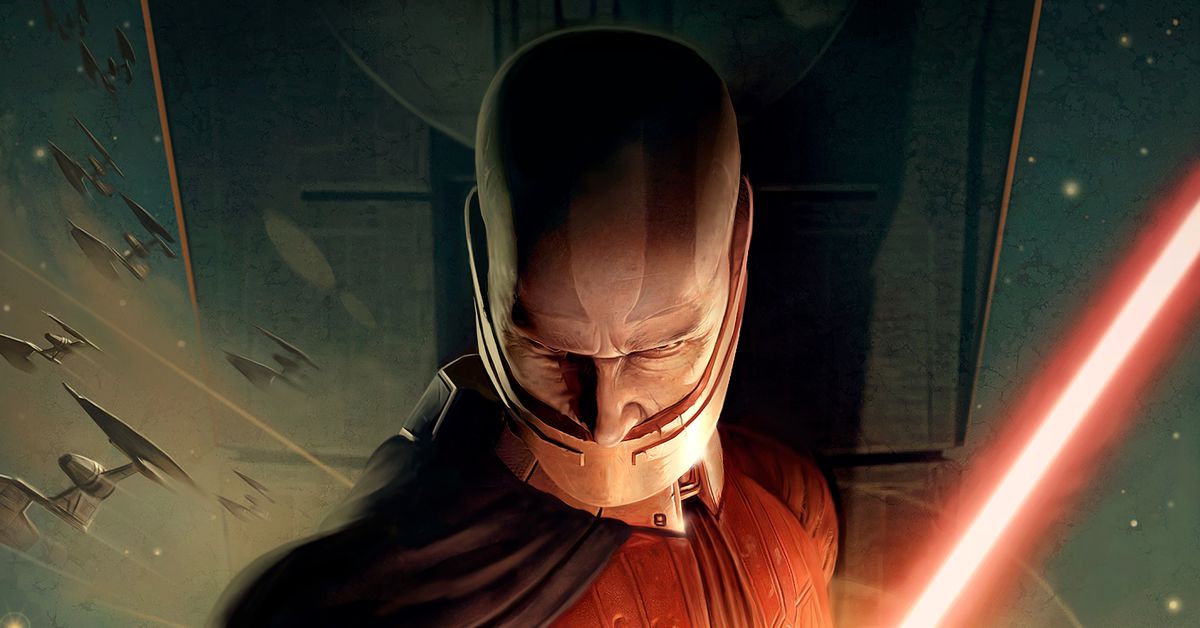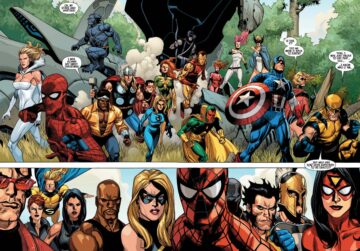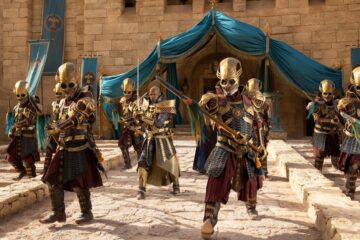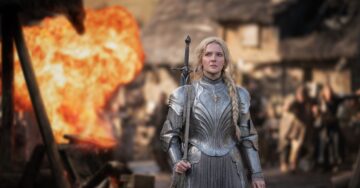
Stop me if you’ve heard this one before: Star Wars? It’s pretty cool. That’s true for a lot of people, because whether or not you’re into the franchise’s current direction, it’s been around for so goddamn long that there is almost certainly an era, a comic, and/or a series of books or video games that speaks to your individual taste in genre fiction. It is simply hard to object to laser swords, space wizards, and starfighters on principle. It’s when you get specific that arguments can happen. Today, my specific argument (and I reserve the right to have a different one tomorrow) is that Star Wars’ Old Republic era kicks ass, and I’m a little bummed it’s mostly been abandoned.
Spurred by Ahsoka’s revisitation of old Star Wars Legends-timeline stories I’m fond of, I’ve been tooling around with a bunch of stories set in the Old Republic, a no-longer-canon Star Wars era ranging anywhere during the roughly 30,000 years prior to The Phantom Menace. What’s interesting about this Star Wars setting isn’t just the absolutely massive span of time — which naturally allows for stories wildly different from the films — but that ideas on what an Old Republic story could be varied a lot before an aesthetic became codified in BioWare’s classic RPG Knights of the Old Republic.
Prior to KOTOR, comics like Jedi vs. Sith depicted a version of Star Wars that was full-on fantasy, where Jedi Knights were literally knights in elaborate armor, only with lightsabers, and ships looked like giant galleons that could fly. Compare that to the current Star Wars story, with its strict brand guidelines, and I feel like I’m talking about a mythical city like El Dorado, a place where kooky writers and artists could just think of anything and call it Star Wars.
Frankly, there aren’t a lot of Star Wars stories like this — Tales of the Jedi is the most prominent series of books and comics to explore this era in this way — but even with its more on-brand aesthetic, the appeal of the Old Republic post-KOTOR is the same. It’s a Star Wars setting that the team at BioWare were given the freedom to make their own, a setting that other creators saw potential in — from Obsidian Entertainment, who made Knights of the Old Republic 2: The Sith Lords, to writers like John Jackson Miller and the many artists who told parallel stories in Dark Horse’s Knights of the Old Republic comics. (Which Marvel has republished as The Old Republic Vols. 1-3.)
At its best, the Old Republic felt like a setting that emerged from stories about people. KOTOR is remembered for spinning a new legend about the mysterious Darth Revan. The Knights of the Old Republic comics kicked off with a great hook about Zayne Carrick, a padawan on the run from the Jedi Masters he believes committed murder. And several books and comics explored what made a guy named Darth Bane tick, and how his story changed the villainous Sith for millennia.
This stands in contrast to a lot of Disney-era efforts to expand the canon — namely The High Republic era, which feels more like a setting that was devised first, with stories and characters retrofitted into it. That doesn’t mean they’re bad per se, it just means that they require a bit more buy-in at first, as High Republic stories spend a lot of time exploring the state of the galaxy and how it differs from more familiar Star Wars fare. They are works of architecture, Star Wars for the MCU era.
As someone who likes a lot of Star Wars but has always stopped shy of being a Star Wars obsessive, I’ve always appreciated the breadth of what’s out there, and how fun it can be when you become canon-agnostic and stop worrying about whether something fits into Disney’s Star Wars master plan. Frankly, Star Wars is a big business — staggeringly big, almost too big to feel personal in any kind of way. But for a while, some folks pulled it off. Maybe, with luck, they’ll do it again.
- SEO Powered Content & PR Distribution. Get Amplified Today.
- PlatoData.Network Vertical Generative Ai. Empower Yourself. Access Here.
- PlatoAiStream. Web3 Intelligence. Knowledge Amplified. Access Here.
- PlatoESG. Automotive / EVs, Carbon, CleanTech, Energy, Environment, Solar, Waste Management. Access Here.
- PlatoHealth. Biotech and Clinical Trials Intelligence. Access Here.
- ChartPrime. Elevate your Trading Game with ChartPrime. Access Here.
- BlockOffsets. Modernizing Environmental Offset Ownership. Access Here.
- Source: https://www.polygon.com/23845775/star-wars-old-republic-hella-tight
- 000
- 30
- a
- About
- absolutely
- aesthetic
- again
- allows
- always
- Amazon
- an
- and
- any
- Anything
- appeal
- architecture
- ARE
- arguments
- around
- Artists
- as
- At
- BE
- became
- because
- become
- been
- before
- being
- believes
- BEST
- Better
- BIG
- Bioware
- Bit
- Books
- brand
- breadth
- Bunch
- business
- but
- by
- call
- CAN
- certainly
- changed
- characters
- City
- Classic
- committed
- contrast
- cool
- could
- Creators
- Current
- Dark
- different
- direction
- do
- During
- efforts
- el
- Elaborate
- emerged
- Entertainment
- era
- even
- Expand
- explore
- explored
- Exploring
- familiar
- FANTASY
- feel
- Fiction
- films
- First
- Fits
- Fly
- For
- Freedom
- from
- fun
- Galaxy
- Games
- Genre
- Get
- giant
- given
- great
- guidelines
- happen
- Hard
- has
- Have
- he
- High
- his
- Hook
- How
- HTTPS
- i
- ideas
- if
- in
- individual
- interesting
- into
- Is
- IT
- ITS
- Jackson
- Jedi
- john
- just
- kind
- laser
- like
- likes
- Little
- Long
- looked
- lot
- Luck
- made
- make
- many
- Marvel
- massive
- master
- maybe
- me
- mean
- means
- more
- most
- mostly
- murder
- my
- named
- namely
- never
- New
- not
- obsessive
- Obsidian
- Obsidian Entertainment
- of
- off
- Old
- on
- One
- only
- or
- Other
- out
- own
- People
- per
- personal
- phantom
- place
- plan
- plato
- plato data intelligence
- platodata
- platogaming
- Polygon
- potential
- pretty
- principle
- prior
- prominent
- Republic
- require
- reserve
- right
- roughly
- RPG
- Run
- same
- saw
- Series
- set
- setting
- several
- ships
- Simply
- So
- some
- someone
- something
- Space
- span
- specific
- spend
- spinning
- Sponsored
- stands
- Star
- Star Wars
- State
- stop
- Stories
- Story
- strict
- talking
- taste
- Team
- than
- that
- The
- their
- there
- they
- think
- this
- time
- to
- Today
- tomorrow
- too
- true
- version
- Video
- video games
- vs
- was
- way
- were
- What
- when
- where
- whether
- while
- WHO
- with
- works
- years
- you
- your
- zephyrnet











